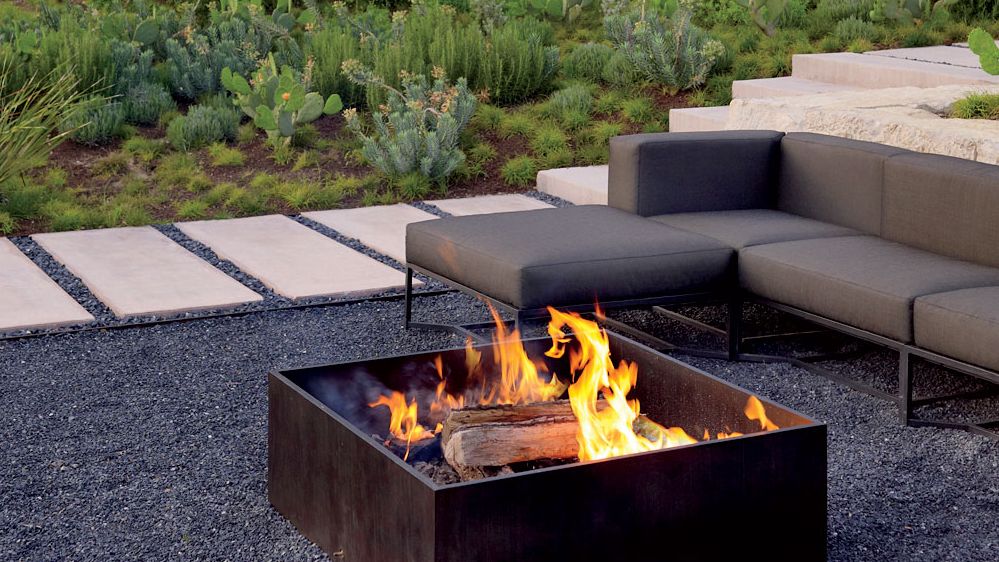Credit: architecturaldigest.com

West Elm’s Galvin fire pit is another clean-looking piece that aligns with a brutalist aesthetic, but that doesn’t mean it can’t fit in with your rattan and wicker accents, especially if you’re following a light tone color palette. The propane-powered table is battery operated, with a hidden key valve ignition for a streamlined look. The concrete texture will withstand any and all weather conditions too, and you can always fashion a table top from wood or glass if you ever want to transform the piece into a full-on table.
How We Chose These Fire Pits
Selecting the best fire pits for this list was a process rooted in a combination of glowing customer reviews, expert opinions, and tried-and-true functionality. The top fire pit picks stood out for their durability, heat efficiency, ease of use, and value, making them reliable centerpieces for any outdoor space. Whether it’s for cozy nights, entertaining guests, or roasting marshmallows, these fire pits consistently delivered on their promises and came highly recommended by real users.
We also understand that aesthetics play a key role in creating the perfect ambiance. That’s why we included a curated selection of design-forward options for those who prioritize style as much as substance. These runner-ups push the boundaries of traditional fire-pit design, offering sleek materials, sculptural shapes, and unique finishes. While they may not be the top performers in every functional category, they excel at making a statement.
Wood-Burning Vs. Propane/Gas-Burning Fire Pits
One of the first decision hurdles you’ll face when shopping for a fire pit is the choice between a wood-burning fire pit or one that uses gas and propane. Experts note that the main difference between the two comes down to the burn itself. Propane and gas burn cleaner than wood—that’s where the term smokeless comes from. These types of fire pits are easier to maintain and are generally safer choices for guests to be seated around since they emit a more controlled flame (i.e., they’re less harmful to the surrounding air quality).
On the other hand, wood-burning fire pits can give off a more authentic, campfire-type feel, but they also produce soot, ash, and creosote, so there might be cleanup or sweeping involved after each use. For a reduced carbon footprint, the best wood options are sustainable, locally-sourced firewood. You can also use wood fuel pellets, which produce low smoke and very little ash or wood scraps and yard prunings to offset environmental damage.
Where Can You Safely Use a Fire Pit?
We recommend reading through FEMA’s safety guidelines when it comes to properly using any type of fire-burning accessories. Fire pits should be situated at least 10 feet from your home and any other flammable objects. Children should be monitored while fires are lit and make sure all flames are extinguished when the pit is no longer in use. Before starting a fire outdoors, make sure to review your fire pit’s safety manual and extinguishing practices. If you’re using your fire pit on public grounds, be sure to familiarize yourself with the land manager’s regulations on where to build a fire, appropriate wood to use, and potential burn bans.










